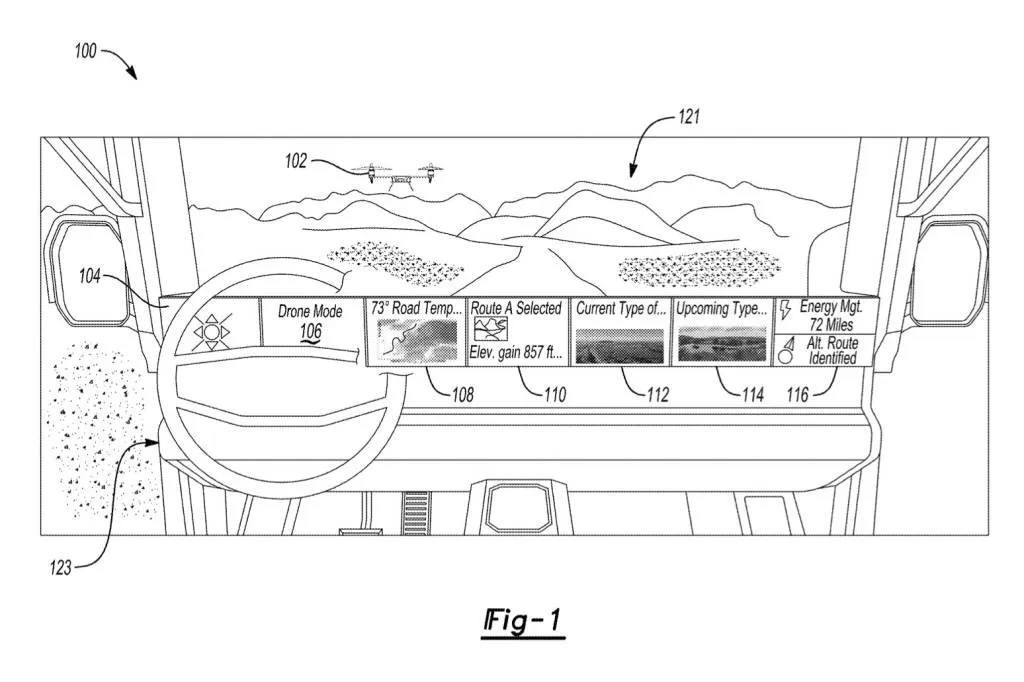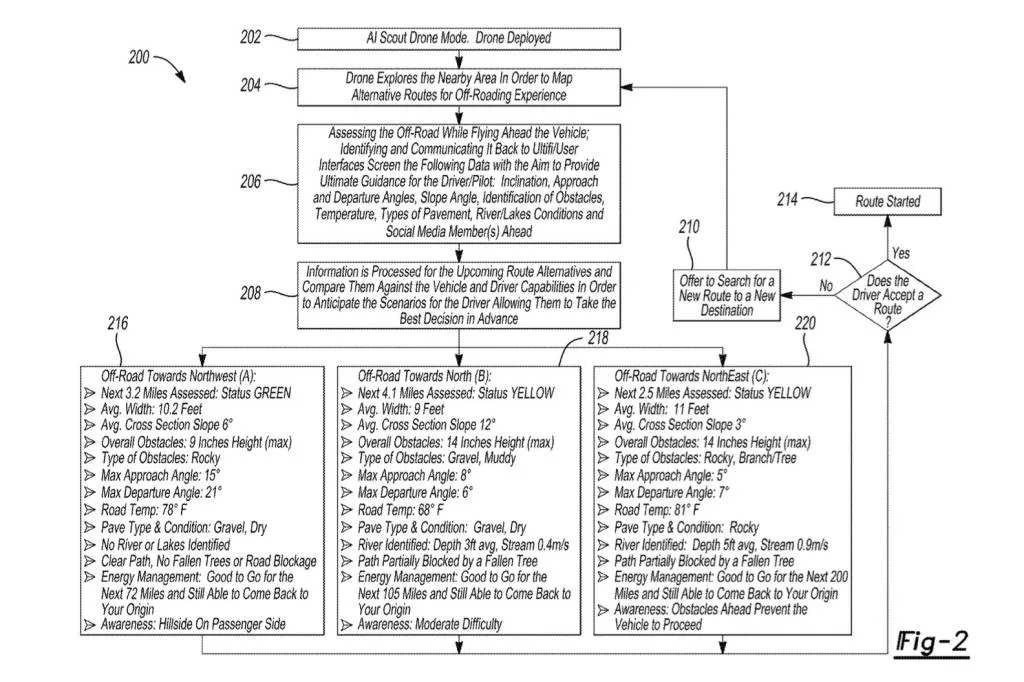- GM might deploy drones to scout off-road trails ahead of a vehicle
- The drones could relay a recommended route back to the vehicle
- Rivian's filed a patent for a drone system to assist with off-roading as well
General Motors wants to use drones to help drivers navigate challenging terrain.
A GM patent application for "drone-based off-road vehicle routing" was published by the United States Patent and Trademark Office (USPTO) June 13, 2024, after being filed by GM December 13, 2022. In it, GM discusses deploying a drone to fly ahead of a vehicle to scout the terrain, and then relaying a recommended route back to the driver.

General Motors off-road navigation drone patent image
The drone would have onboard sensors such as radar and lidar, with a data link connecting it to the vehicle, according to the patent application. In could factor in things like anticipated incline, approach and departure angles, potential obstacles, the type of surface ahead, or any bodies of water that would need to be forded. It could even direct the driver to their friends by linking to social media profiles, GM suggests.
In some cases, the drone may also offer multiple route options, sorted by degree of difficulty. It could also be used to estimate fuel consumption or electric range to determine if a vehicle will be able to make it to the destination and back.

General Motors off-road navigation drone patent image
The potential advantage of drones is that they can be flown well ahead of the driver's line of sight. They can also view the terrain ahead in three dimensions and in real time, unlike in-vehicle maps for navigation systems that may not be updated continuously. A drone could also be used to accompany drivers if they decide to get out of their vehicles and hike, GM notes in the application.
GM isn't the only automaker thinking along these lines. Rivian has also tried to patent a drone system, which would also use radar and lidar to spot obstacles. However, Rivian's version appears to be intended for shorter-range use. Instead of scouting complete routes, Rivian's patent application discusses using drones as replacements for human spotters at particularly tricky obstacles.